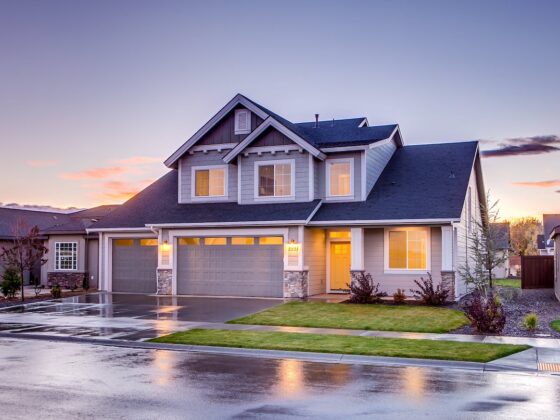When it comes to home maintenance, the garage door often gets overlooked. However, proper maintenance is crucial to ensure the longevity and smooth operation of your garage door. In this blog post, we will provide you with some valuable tips on how to maintain your garage door and keep it in tip-top shape.
Regular Cleaning

One of the simplest yet most effective ways to maintain your garage door is regular cleaning. Dust, dirt, and debris can accumulate on the door’s surface and tracks, causing them to become clogged or damaged over time. To clean your garage door, simply use a mild detergent mixed with water and a soft cloth or sponge. Gently scrub the surface and rinse thoroughly with water. Avoid using harsh chemicals or abrasive materials as they can cause damage.
To clean your garage door, you will need a soft cloth or sponge, a mild detergent, and a hose. Follow these steps:
- Rinse the door with water to remove any loose dirt or dust.
- Apply the detergent to the cloth or sponge and gently scrub the door, starting from the top and working your way down. Pay attention to any stains, spots, or marks that may need extra cleaning.
- Rinse the door again with water to remove any soap residue.
- Dry the door with a clean cloth or towel, or let it air dry.
- Repeat the process for the other side of the door and for the door frame and tracks.
You should clean your garage door at least once every three months, or more often if it is exposed to harsh weather conditions or heavy use. By doing so, you can keep your garage door in tip-top shape and extend its lifespan.
Lubrication is Key
Proper lubrication is essential for the smooth operation of your garage door. Over time, the moving parts of the door, such as hinges, rollers, and tracks, can become dry and rusty, leading to noisy and jerky movements. To prevent this, apply a silicone-based lubricant to these parts at least once a year. Be sure to clean the parts before applying the lubricant to ensure maximum effectiveness.
To lubricate your garage door, you will need a spray lubricant that is designed for garage doors, such as silicone or lithium-based products. Avoid using oil or grease, as they can attract dirt and dust and cause more harm than good. Follow these steps:
- Open the garage door and inspect the hinges, rollers, springs, cables, and pulleys for any signs of damage or wear. If you find any, you may need to replace them or call a professional for repair.
- Spray the lubricant on the hinges, rollers, springs, and bearings, and wipe off any excess with a cloth. Do not spray the tracks, as this can cause the door to slip and become unbalanced.
- Spray the lubricant on the inside of the tracks, and use a cloth to spread it evenly along the length of the tracks.
- Spray the lubricant on the chain or belt of the opener, and on the rail where it contacts the trolley.
- Close the garage door and test its operation. If you hear any squeaking or grinding noises, you may need to apply more lubricant or adjust the tension of the springs or cables.
You should lubricate your garage door at least once every six months, or more often if it is used frequently or exposed to extreme temperatures or humidity. By doing so, you can ensure that your garage door operates smoothly and safely.
Tighten Loose Hardware
As your garage door goes through its daily cycles of opening and closing, the hardware can become loose due to vibrations. Regularly inspect the door’s hardware, including hinges, bolts, and screws, and tighten any that have come loose. This simple task can prevent further damage and ensure that your garage door operates smoothly and safely.
Related:
Check and Replace Weatherstripping
Weatherstripping is the rubber seal that runs along the bottom of your garage door, preventing drafts, pests, and debris from entering your garage. Over time, weatherstripping can become worn or damaged, compromising its effectiveness. Inspect your weatherstripping regularly and replace it if you notice any cracks, gaps, or signs of wear. This will help maintain the energy efficiency of your garage and keep unwanted elements out.
Test Safety Features
Garage doors are equipped with various safety features, such as photo-eye sensors and auto-reverse mechanisms, to prevent accidents and injuries. It is important to regularly test these safety features to ensure they are functioning correctly. To test the photo-eye sensors, simply place an object in the door’s path and try closing it. The door should automatically reverse if the sensors detect an obstruction. If the door does not reverse or the sensors are not aligned properly, consult a professional for repairs.
Professional Maintenance
While regular DIY maintenance is essential, it is also recommended to schedule professional maintenance for your garage door at least once a year. A professional technician will thoroughly inspect the door, identify any potential issues, and perform necessary repairs or adjustments. This proactive approach can help prevent major problems down the line and ensure the optimal performance of your garage door.
Conclusion
By following these simple yet effective maintenance tips, you can keep your garage door in excellent condition for years to come. Regular cleaning, lubrication, hardware tightening, weatherstripping checks, and safety feature testing are all part of a comprehensive maintenance routine. Remember to schedule professional maintenance to catch any potential issues early on. With a little effort and care, your garage door will continue to serve you reliably and smoothly.











